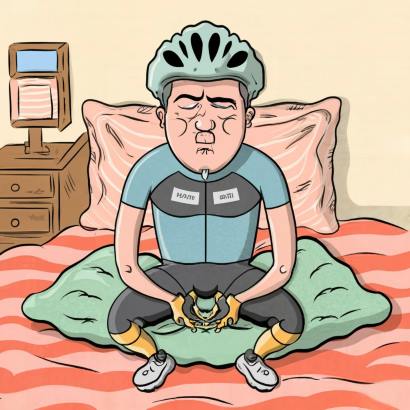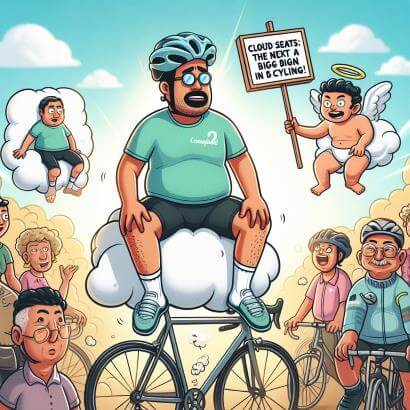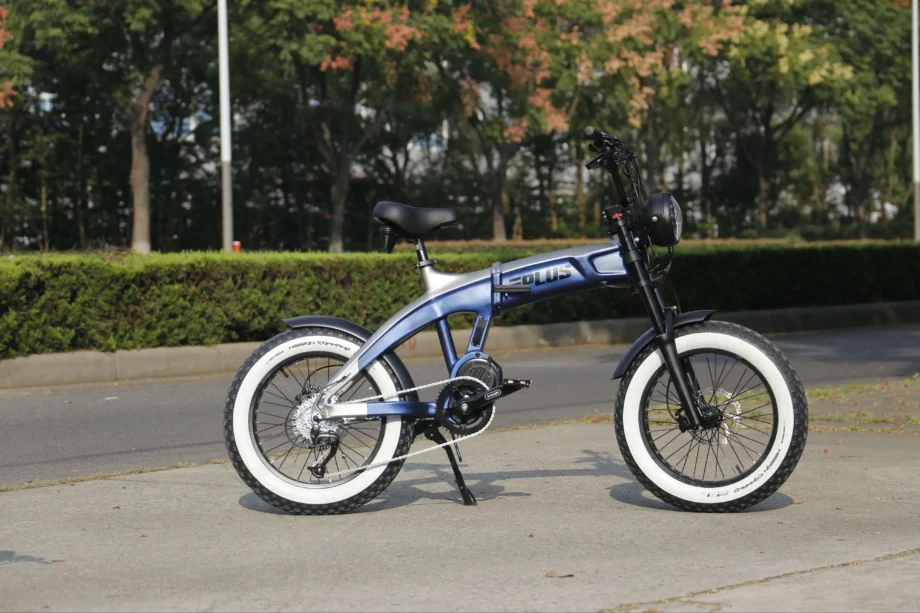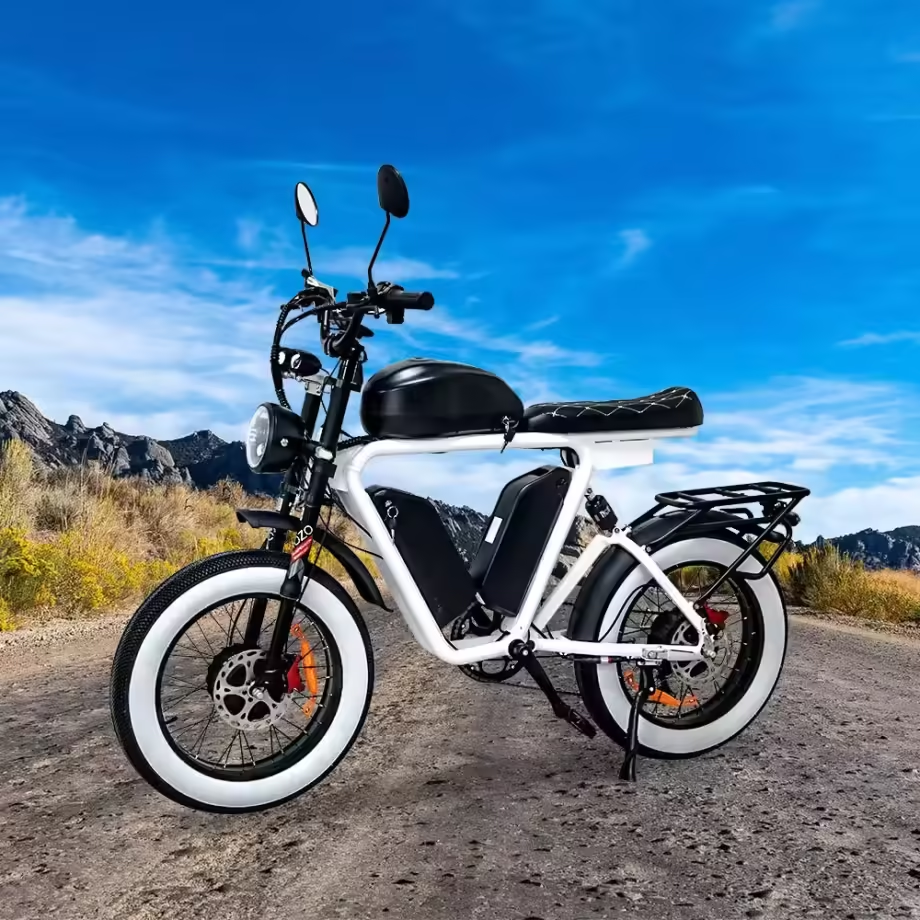We understand the need for a pain-free ride, especially if you are doing a long distance on rough terrain. As a cyclist who just got back into cycling in my 40s on an ebike, I have to say the rear pain of my ass and saddle pain was not something I even considered when I got back on the electric bike, as I didn’t get this when I was a kid or at least don’t remember it, I can only talk of my experience, I think my friends thought I was ill or something with me walking and waddling funny like a duck because of the pain and chafing.
To avoid saddle soreness, what I found was that it did get better over time, and how quickly it got better depended on the type of saddle I was using at the time. Choose a nice wide saddle if you can and also use a suspension seat post. This gave me a vast improvement.
However, it did not stop the pain straight away. Over time, it goes away and yours will too. Once you get used to it, alternatively, lie on your front on the bed and get your wife or partner to slipper you laid on the bed, this will soon harden things up, in many ways!

Biking Properly for Comfort – Things I tried
The first e-bike I had was an electric mountain bicycle, which had a very harsh and hard seat you know the ones where it was like sitting on a razor blade, it hurt my bum a lot, and at times was unbearable for a short time, I would have been mistaken for my bike being a mid-evil torture device and not something fun.
Don’t push through it – I did initially think, well, maybe it would get better if I kept cycling, even when it hurts. Don’t try that because it does not work, it just got worse until I ended up sitting on a cushion at home on my bed. It was that sore, listen to your body.

Padded shorts – I got some padded cycling shorts. They did help a little, but honestly not a lot, you have to keep wearing the same item for extended periods, which would mean buying many of them. It is worth a try, but it was not a massive success for me, the padding did not take much of the soreness away, I no longer use them.
Seat Position – You should try to alter your position, saddle adjustment is a trial-and-error thing. This did help a little as if you move the seat it will enable you to sit on a different part of your behind, so try this to see if you can find a less painful position.
New Seat – When I got a new bike I also got a new seat, which was wider and softer. This was a massive improvement, so this is a solution. I just got a wide soft one.
Suspension Seat Post – This along with a new seat was the best solution I found to my saddle soreness, as I think a lot of the sores come from bounding up and down on the saddle and moving around. If the seat is. It takes away the bumps in the road, this works well give it a try
Time on Bicycle – I know it is probably obvious but after a year or so of riding my bike, eventually it just went away totally, although I do have a more comfortable seat, so it does get better slowly with time as your body adapts, the more distance you cover the more confidence you will get and the issues will fade.
Chamois Cream – Now if you are a pro cyclist you could baby oil up or whatever they use, they are often on the bike for 7 hours straight, and they often do what I would call lube up, but I think most pros have their way. They use various creams to stop the friction and getting sores, but even if they get saddle sores what hope is there for us?
Some other things to consider
Consider your posture, proper posture means not only balancing your weight evenly between the saddle and handlebars but also positioning your elbows slightly bent. This subtle bend in your elbows works to absorb shock and vibration from the road, making the overall ride much smoother and more comfortable.

Think of it this way: Just like how you’d want to have a soft cushion between yourself and a hard surface, maintaining this slight bend in the elbows acts as a buffer to minimise jarring vibrations from impacting your arms and shoulders as you ride along uneven surfaces.
Moreover, remember to periodically stand up on the pedals while cycling. This simple action helps alleviate pressure on the saddle and gives your rear end a much-needed break, especially during long rides.
By adopting these simple yet effective techniques, you can maintain proper posture and greatly reduce the risk of developing saddle soreness while cycling.

Unfortunately, there is no quick solution and if you have a racing bike you cannot slap on a wide soft seat
Are there any specific exercises or stretches that can help prevent saddle discomfort?
Yes, specific exercises and stretches can help prevent saddle soreness. Regularly incorporating exercises like hip flexor stretches, glute bridges, and core strengthening exercises can improve your cycling posture and reduce the pressure on your sit bones. Research shows that cyclists who perform these exercises experience fewer instances of saddle soreness and have increased comfort while riding.
What causes saddle aches and how can it be prevented?
Saddle soreness is usually caused by friction and pressure that occurs during cycling. It can be prevented by ensuring proper bike fit, using padded shorts or gel seats for extra cushioning, regularly changing position while riding, and maintaining good personal hygiene to prevent bacterial infections. According to a study published in the Journal of Sexual Medicine, proper bike fit significantly reduces saddle soreness, highlighting the importance of correctly adjusting the bike’s saddle height and tilt.
Are there any specific types of bike saddles or seats that can help prevent saddle soreness?
Yes, there are several types of bike saddles that can help prevent saddle soreness. One popular option is the anatomical or ergonomic saddle, which is designed to provide support and reduce pressure on sensitive areas. Another option is the cutout saddle, which has a groove or hole in the middle to relieve pressure on the perineal area according to a study published in the Journal of Sexual Medicine, cyclists who used ergonomic or cutout saddles experienced less pain and discomfort compared to those using traditional saddles. Choosing the right saddle that fits your body type and cycling style can significantly reduce the risk of saddle soreness.
How long does it typically take for saddle soreness to heal, and what can be done to speed up the healing process?
The healing time for saddle soreness can vary depending on the severity of the sore and individual factors. Generally, mild cases take around 4-7 days to heal, while more severe ones may require 2-3 weeks or even longer. To speed up the healing process, it’s important to keep the area clean and dry, apply a healing ointment or cream, refrain from cycling until fully healed, and use padded shorts or a cushioned seat cover when returning to cycling. Additionally, incorporating gentle stretching exercises and taking breaks during rides can help alleviate pressure on the affected area. According to a study by the British Journal of Sports Medicine, proper bike fit and saddle selection significantly reduce the risk of developing saddle sores, highlighting their preventive importance.



